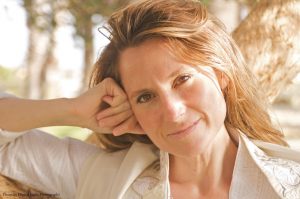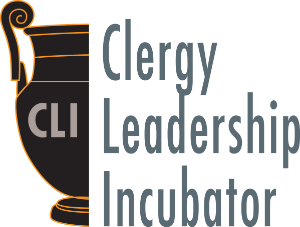How Radical Ritual Empowers a New Spiritual Community-Part 3
Rabbi Sid’s Editor’s Note: The DNA of CLI is transformational change, both of the American rabbinate and, more importantly, of the kinds of spiritual communities that can engage the passion and interests of 21st century Jews. Rabbi Lori is a graduate of CLI’s inaugural cohort. The Open Temple was incubated when Rabbi Lori was a CLI Fellow. Her creative re-imagining of all things Jewish should be an inspiration to others. This article, which we will publish in 5 installments in successive months, is the longest we’ve ever published. The article also sets the stage for CLI’s co-sponsorship of the Kol Tefillah Conference, scheduled to take place January 19-21, 2024 at Temple Beth Am in Los Angeles.
Several years ago, participants entered into Yom Kippur while Sympathy  for the Devil by the Rolling Stones wasplayed by our band. When the song ended, I asked if anyone knew why Sympathy for the Devil was being played. People seemed puzzled and there was no response. I explained that, at some point in the Torah service, we would read about Azazel, an ancient near-eastern he-goat that represented the Satan in our tradition. When we got to the Torah reading of Azazel, I asked if anyone knew what I was talking about. They didn’t. I cracked open the Torah, and explained that we were commanded to give two offerings – one to Azazel and one to God. “What in human capacity would require us to give expiation to a devil?”, I asked.
for the Devil by the Rolling Stones wasplayed by our band. When the song ended, I asked if anyone knew why Sympathy for the Devil was being played. People seemed puzzled and there was no response. I explained that, at some point in the Torah service, we would read about Azazel, an ancient near-eastern he-goat that represented the Satan in our tradition. When we got to the Torah reading of Azazel, I asked if anyone knew what I was talking about. They didn’t. I cracked open the Torah, and explained that we were commanded to give two offerings – one to Azazel and one to God. “What in human capacity would require us to give expiation to a devil?”, I asked.
At that moment, images from Charlottesville appeared on the screen. Men in button down shirts marched with torches and chanted “Jews will not replace us.” Suddenly, a man rose from the congregation. “That was me,” he called out “I was one of them.” I asked him to come to the bimah and explain what he meant.
I placed Logan in the congregation as a ringer. I met him through an organization called “Life After Hate” that provides former neo-Nazis community, time to reflect and helps them to unload the burden of their transgressions by providing them the opportunity to speak and “confess” to public audiences. Logan shared his story – years of anti-semitic gang membership, drug dealing and even participation in a murder, for which he served 20 years in prison. After sharing his story, he said, “I heard that today was a day in the Jewish calendar that we are to ask for forgiveness. I am wondering if you all would forgive me.” Our congregation rose from their seats and came to the bimah in a spontaneous mi sheberach. In a tiny healing of the universe, Logan continues to work in our community as a security guard and handyman to this day.
The Burial
I always ask young people “what is your favorite Jewish holiday?” When they answer, “Yom Kippur” I let them know that they have a high probability of becoming a rabbi someday. There is something to this ritual that is so essential; indeed, it is the apex of our High Holidays and the most immersive and challenging experience of Open Temple’s High Holiday Ritual Lab. For years, I have festooned our bimah with mock tombstones on Yom Kippur with the words “Your Name Here” printed on them. At the peak of Covid, I found that circumstances provided the perfect opportunity, and I called several local cemeteries to see if one might host us. What had been my dream–to someday offer Kol Nidre in a cemetery, was finally a reality.
Memeno mori is Latin for a genre of performance art that reminds the audience of the inevitability of death. I always imagined Kol Nidre as a form of memeno mori. Here is an excerpt of the liturgy I fashioned for our first Kol Nidre burial, experienced in a cemetery.
With the sun setting in Santa Monica, cars entered the narrow driveway of Woodlawn Cemetery as the band played Bitter Sweet Symphony by The Verve in a loop. Here is the song as liturgy:
Well I’ve never prayed,
but tonight I’m on my knees, yeah.
I need to hear some sounds that recognize the pain in me, yeah.
I let the melody shine,
let it cleanse my mind.
I feel free now
but the airwaves are clean and there’s nobody singing to me now.
No change, I can change,
I can change, I can change.
But I’m here in my mold,
I am here in my mold.
Cause it’s a bitter-sweet symphony that’s life.
The iconic song transitioned, and our cantorial soloist chanted the traditional High Holiday nigun with its penetrative, “Lai lai lai lai lai lai lai…” melody, ending on an emphatic final punctuation. With the music halted, the silence penetrated us. Standing together, we realized what was obvious but formerly not as penetrative – the beautiful park-like environment was filled with headstones, as we contemplated our own life on Kol Nidre.
Yom Kippur rituals return, year after year, and we are asked to recognize the permanence of our actions reconciled with the evanescence of our existence. Under a rising half-moon, 120 souls sat on tapestries, laid out for them in between tombstones, the marble stones and the names etched into them, a visible reminder of where life, inevitably, leads.
Our cellist began the Kol Nidre, sounds chanted for millennia, Max Bruch’s famous cello solo, a haunting melody. The Kol Nidre observance is a descent into the grave, with the hope that we will make it out of this near-death experience and rededicate our lives for the good. As the selichot service began, the Jewish ritual practice of tahara, or ritual cleansing of a body for burial, was described, and all participants were given white shrouds to wrap themselves in. As the music began, participants were asked to take a look at the headstone they were standing before and whisper the name of the person, asking for their blessing to lie down. Beginning with an awareness of what will sustain us for the next 25 hours – breath – a guided visualization began of their own funeral – what were the eulogies given? Who would show up? What regrets did we hold in our hearts were life to end at this moment?
The Selichot service swelled, and an old, almost forgotten song from the 80s, “The Living Years,” began:
Say it loud,
say it clear,
you can listen as well as you hear.
It’s too late,
when we die,
to admit we don’t see eye to eye.
Shema Koleinu wove in and out of the Mike and the Mechanics song, the words of “God’s holy liturgy” underscored by the rock song: “Hear our voice, O God, pity us, save us. Accept our prayer with compassion and kindness.” A harmonium’s chords rose, and the melody of Avinu Malkeinu began. In the darkness, bodies began to appear, apparitions in the moonlight. One at a time, ghostly shrouds of white arose, their voices forming a requiem choir:
Our Father, our King!
Favor us and answer us
for we have no accomplishments;
deal with us charitably and kindly.
As the prayers swelled, audible cries were heard throughout the cemetery – it was as if the dead poured their remorse through the soil. What rose through the congregation was more than just a simple regret – it was a life’s reckoning of what Kol Nidre is actually about. We create a near-death experience as a simulation or test-run for what we will one day experience, and we emerge with a renewed sense of what each of our personal life journeys is about. We release regrets and replace them with resolve. We forgive ourselves for the shame that we carry around, the klipot (or shells) that inhibit us from living life to the fullest. Facing down our own graves, we have no choice, as the 13 Attributes of God are chanted, but to acknowledge that we still have work to do in order to resemble one who is full of “compassion, grace and loving-kindness.”
Our collective chant of mourner’s kaddish bore new meaning – this funeral was for the living. The band closed the service with Pearl Jam’s, “Just Breathe” and all lingered, despite the cold, damp air. The service ended, and the band and I stood, our heads down, tears streaming from our cheeks, our hands on our hearts. And 120 souls stood under a half-light, half-moonlit sky, still processing what we had just experienced.
At the end of the service, a man walked up to me. “My father was a rabbi,” he said, “and I attended his Kol Nidre service for 40 years. Tonight, for the first time, I finally know what it is about.”
___________
Rabbi Lori Shapiro is the founding rabbi of The Open Temple in Venice, CA. She developed this unique spiritual community model as a Fellow in Cohort 1 of the Clergy Leadership Incubator (CLI) from 2013-15 and then continued working on it when participating in the Open Dor Project. She and her husband, Dr. Joel Shapiro, live in the Venice canals with their two daughters and labradoodle.

